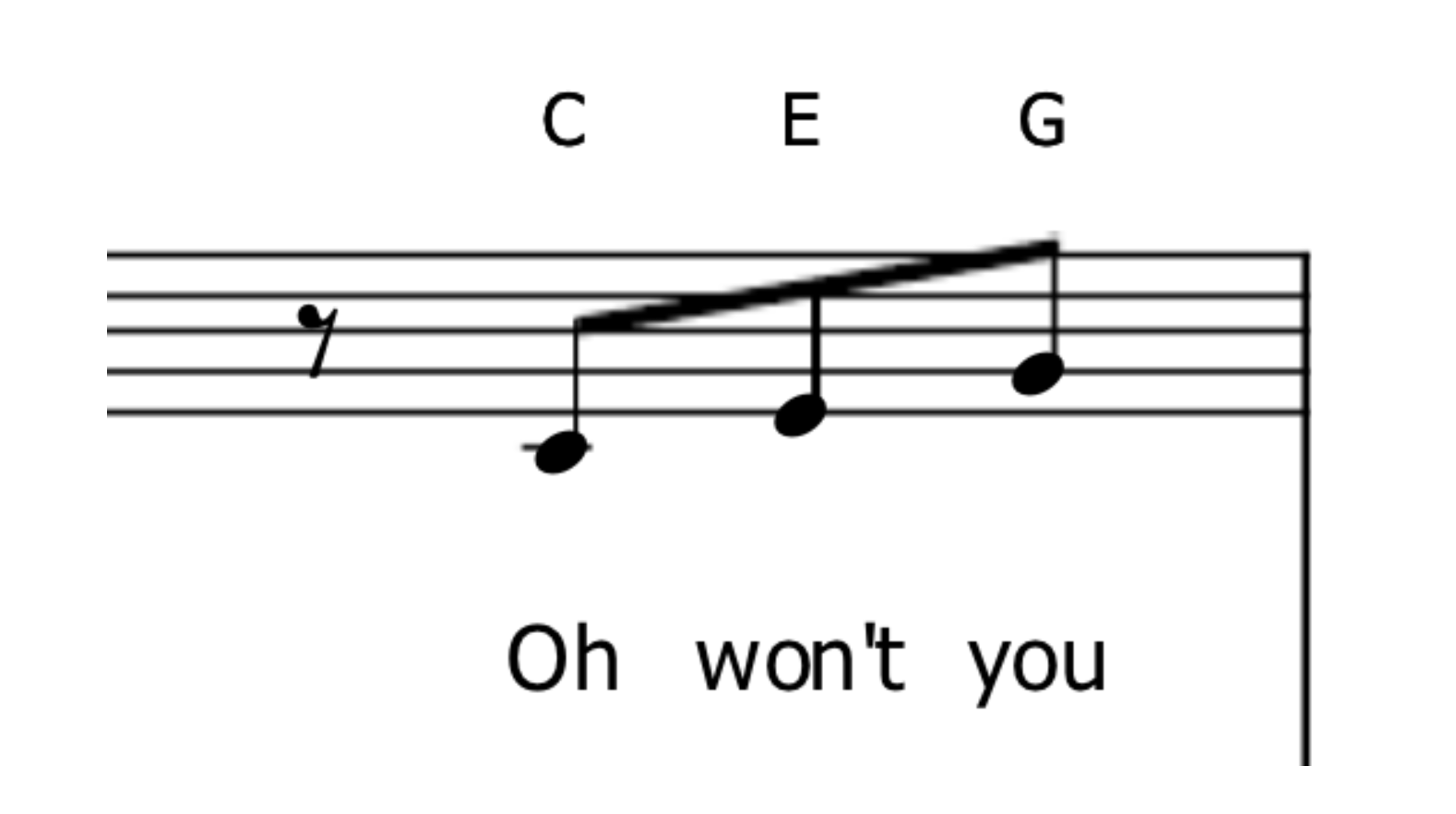
Improve your songwriting with these ten vocal and melodic tricks.
We’ve all been there: You’ve got an amazing hook for your new song. But you freeze as you realize you have no idea what to write next!
The pride you felt just a few moments ago disappears as you struggle to write the next part; for hours, days, weeks or sometimes years. The truth is writing a song can be a very rewarding experience for a singer. It can also be one of the most painful.
Odds are, you’ll deal with writer’s block at one point or another. And even the best songwriters hit stumbling blocks when they’re writing a new song.
But rather than staying stuck, I wanted to show you some techniques to come up with your next amazing hook. As a vocal coach, I help singers improve their songs all the time. And having taught over 500 students (many of them singer/songwriters), I can promise you this:
You can beat your writer’s block and create some of your best vocal melodies yet.
Now you may feel that you’ve already tried everything: meditation, timed writings, jam sessions,…and that nothing helps. But I promise if you learn a few of these simple tricks, you’ll be amazed at how easy it is to write new songs.
So today, I’ll show you 10 vocal tricks you can use to beat your writer’s block. You can use these techniques as a jumping off point whenever you’re writing a new song. Just see what works best for you and use it every time you need some inspiration.
Ready to get started? Read on…
Trick #1: Learn Your Range and Voice Type
The first step in creating an amazing vocal melody is understanding your range and voice type.


Your vocal range is a measurement of how low and how high you can sing.
For example, a common vocal range for men is from C3-C5. And a common vocal range for women is A3-A5.
Voice type is the Italian classification for your voice based on your range, vocal weight and a bunch of other factors.
Tenor and Soprano are examples of voice types.
Here’s the bottom line:
Knowing your range and voice type is important so that you know what you can expect out of your voice when you’re writing a song.
For example, if you’re a Bass and can’t sing above an E4, then you’ll want to write a melody that stays below E4.
Or if you’re a Soprano who can hit a high C, why settle for a melody that just stays on low notes?
The good news is that you can expand your vocal range. It just takes practice and some simple vocal techniques. In fact, here’s a great article on how to hit high notes without straining.
But for now, here’s how to find your vocal range today:
- Go to your piano or or guitar
- Find Middle C (it’s the first fret of the second string on guitar) and sing the note on an “Ah” vowel.
- Next, sing each note heading downward on the “Ah” vowel until you reach your lowest note.
Write down the lowest note you can sing.
- Finally, sing the Middle C on “Ah” again and head upwards until you reach your highest note.
Write down the highest note you can sing. The distance from your lowest note to your highest note is your vocal range. To find your voice type, simply compare your range with the ones listed on this voice types cheat sheet (it’s in the yellow box at the top).
Now here’s the ugly truth: Many songwriters write melodies with a very narrow vocal range.
Don’t make this mistake! If your range is larger than the melody you have so far, experiment with throwing some high notes into the mix. I promise, just knowing you can sing higher will help you write melodies you didn’t know you could!
Trick #2: Sing the Scale


Can I tell you something crazy? Almost any vocal melody can be broken down into a scale.
Even the most complicated songs usually have a vocal part that’s directly from a scale. With a little bit of ear training, you’ll hear these scales everywhere!
So if you’re stuck on a song and don’t know where to go with it, find some inspiration from a scale. All you need to do is:
1) Find the key of the song and…
2) Sing the scale for that key.
There are lots of different ways to find the key for the song you’re writing.
But one of my favorite ways to find the key of the song is to imagine that you’re ending the song and playing the last chord.
Even if you haven’t written the complete song yet, just imagine that you’re playing the final chord that ends the song.
Most likely, the chord you end on is the key you’re in.
Once you’ve found the key of the song that you’re writing, simply sing the major or minor scale for that key.
So if you’re writing a song in the key of C major, you would sing the scale for the key of C major: C, D, E, F, G, A, B, and C.
You can look up the notes of the major scale for any key here.
Now that you know all the notes for the key that you’re in, experiment by using different notes from this scale.
I guarantee that just starting your vocal melody from a different note will bust your songwriting block!
Trick #3: Raise the Key of the Song


Here’s the bottom line: Many singers write too low for their voice.
But if you’re only singing low notes, you’re missing out on some great opportunities to amaze your audience! Not only do high notes keep the melody exciting, but audiences love when it when a singer can hit those notes well.
The good news is it’s very easy raise the key of the song you’re singing.
If you play guitar, try using a capo to bring your song a little higher.
Start out by capoeing the first or second fret.
Or if you’re feeling adventurous, try playing some chords when you capo the fifth or even seventh fret!
If you play piano, most keyboards have a program to transpose the key higher or lower.
Just look at the user manual for your keyboard and you should find a section on how to transpose it.
Again, start small. Then try transposing up a fourth or even fifth! Finding the right key to sing in is a large part of learning how to sing. You’ll be surprised how just raising the key of the song can make it sound way different! And sometimes that’s all you need to crack the next part of your song. There’s no telling where inspiration can come from.
Trick #4: Sing It an Octave Higher
Now that you’ve experimented with raising the key, let’s try something even more extreme: Sing the melody an octave higher.
An octave is the interval, or distance, from one note of the same name to another.
So an octave is the distance from C3 to C4. Any of the notes in between (D, E, F, G, A, and B) are less than an octave away from C.
Here’s the bottom line: An octave is actually pretty far in terms of singing.
So if you’re singing a song with a melody that’s low, try singing the same melody an octave higher. Learning to sing in octaves is an important vocal technique to improve your singing.
This happens all the time in songs where the verse is low and the chorus is an octave higher.
Take a listen to the song “I’m Not the Only One” by Sam Smith:
The verse is pretty low and the chorus is very high.
But if you listen to the music, you can see that the chorus (“You say…”) is just an octave higher than the last line of the verse (“But I know I still need you here…).
You’ll be amazed at how much more exciting just singing the same melody an octave higher will make your song sound!
Trick #5: Play the Melody on Another Instrument


Here’s the ugly truth: Most singers create vocal melodies that are pretty predictable.
That’s because the human voice doesn’t like to change notes by large leaps. In fact, it’s pretty rare to hear vocal lines that have notes that are more than a few steps apart.
But that’s not true for other instruments.
If you play guitar or piano, you’re probably playing notes all over the place. So one easy way to bust your songwriting block is to take the melody you have and play it on another instrument. If you play the melody on another instrument, not only will you feel more confident about what you’re singing, but you’ll also probably be inspired to change it a bit. That’s because another instrument will give you a different perspective on how to sing it.
Maybe you’ll decide to play the notes in a different order. Or maybe you’ll change the timing between the notes.
So experiment with another instrument to push the vocal melody forward. You’ll be surprised at how just changing the instrument changes your entire perspective on a song!
Trick #6: Reverse the Melody
People get bored with melodies very easily. So even if you have a super catchy vocal melody, you’ll probably want to change it throughout the different parts of the song. You’d be surprised how many singer/songwriters sing the exact same melody for the verse and chorus. But people need variation so they don’t get bored.
One simple trick to keep things interesting is to reverse the melody that you already have written.
Let’s say that you’ve written a melody that goes “C, D, E, and F”
To reverse the melody, simply arrange the melody in the opposite order: “F, E, D, and C”.
Songwriters use this all the time!
Take a look at the song “Lean on Me” by Bill Withers:
The verse starts on the words “Sometimes in our lives, we all have pain” and the notes are: C, D, E, and F.
Then, F, E, D, and C.


See what he did? He just reversed the melody.
This one simple trick keeps your ear interested. And it made “Lean On Me” one of the most popular songs of all time. So if you’re stuck figuring out what melody to write next, try reversing the melody you have and see how it sounds.
Trick #7: Sing a Harmony
Can I tell you a secret? Great harmonies are the key to fantastic songwriting.
But you don’t have to be Simon and Garfunkel to use harmonies in your songwriting! In fact, you don’t even need another singer.
If you’re stuck on what to write next, try creating a melody that’s a harmony of the melody you already have.
Sound complicated? It’s really easy.
Take a look at the song “Ziggy Stardust” by David Bowie:
In the first verse, Bowie sings “He played it left hand, but made it too far”
The notes are: “A, A, B, C, and D.”


Then “D, D, E, F#, and G.”


At first listen, it sounds like a completely different melody.
But when you look at the music, you can see that the notes have exactly the same shape and are all a fifth apart.
That means they’re just harmonies of each other.
Luckily, harmonies are really easy to write for your own songs.
All you need to know to write a harmony to your melody are:
- The notes of the melody you have written and…
- The notes that are a 3rd or 5th above and below those notes.
So, for example, let’s say you’ve written a melody that goes:
“C, D, E, and F”
To write a melody that’s a harmony of that line, you could start a major 3rd above the C. In this case, the note E.
So the harmony would be:
“E, F, G, and A”
You can see the most common harmonies for any note here.
So just plug in your melody and use the harmony to create a new melody.
I promise you’ll be amazed at the great songwriting ideas you can unlock!
Trick #8: Sing an Arpeggio


Singing an arpeggio is one of the easiest ways to write an amazing melody!
What is an arpeggio? An arpeggio is when you sing the notes of a chord in a sequence.
Unlike a guitar or piano, you can’t sing a chord with your voice. But you can sing each note of a chord in a row.
So if I’m playing a C chord, I could sing an arpeggio by singing C, E, and G since those are the notes that make up a C chord.
Arpeggios (or arpeggi if you want to get technical) are everywhere in pop music.
Here are just a few popular songs that have arpeggios:
- The chorus of “Just Give Me a Reason” by P!nk.
- The intro of “Don’t Stop Me Now” by Queen.
- The chorus of “Stay With Me” by Sam Smith.
So how do you write an arpeggio for your song?
All you need to know to sing an arpeggio is:
- What chord you’re playing for the music and…
- The notes that make up that chord.
Pretty easy, huh?
Music theory aficionados will know that chords are made up of a group of notes called the 1st (or Root), 3rd and a 5th.
And those notes come directly from the order that they’re played in the major scale.
Here are the major scales for each key again.
For the key of C major, for example, the major scale would be: C, D, E, F, G, A, B and C.
So if I wanted to sing a C major arpeggio, I would just pick the 1st, 3rd and 5th notes of the scale: C, E, and G.
Take a look at the song “Stay With Me” by Sam Smith:
The first notes of the chorus on the words “Oh won’t you…” are C, E and G.
And what are those notes?


The notes that make up a C chord. It’s an arpeggio!
So if you’re stuck or just looking for a little inspiration in your melody, sing an arpeggio for the chord that you’re playing.
You’ll be amazed that just this simple trick of breaking down a chord into different notes will inspire you to write cool, new melodies.
Trick #9: What Would Your Favorite Artist Do?
Sometimes when you’re writing a new song, it’s good to look to your heroes for inspiration.
So, if you’re stuck on what to write next, image that the song is already famous and ask yourself what your favorite artist would do.
How would Sam Smith sing this part?
What notes would Freddie Mercury sing for this melody?
How would Adele write this chorus?
The possibilities are endless!
And imagining your favorite singers’ approaches to those notes is a fantastic way to get you unstuck because it feels like it’s no longer YOU writing the melody; it’s them.
This tends to work better the more you listen to different kinds of music. You never know where inspiration will come from.
But when you’re looking for inspiration from the greats, make sure that you’re using them for a jumping off point; not to write your song for you. There’s a difference between inspiration and stealing. So even if you create a melody similar to one of your hero’s, be sure to make it your own.
Trick #10: Mix and Match Chords and Melodies
One great way to find inspiration is to mix and match different chords and melodies together.
Sound complicated? It’s super easy!
Simply take a melody that you love and combine it with the chords from another song you love.
Here’s how you do it:
- Pick a melody from one of your favorite songs
- Go to your piano or guitar and play the melody on your instrument.
- Now pick some chords from a song that you’ve always loved.
You can easily look up the chords to your favorite songs on sites like Ultimate Guitar.
- Finally, combine the melody that you played with the chords that you found.
Odds are that the melodies and the chords you chose are in different keys and may clash a bit.
But don’t let that stop you! Instead, let the noise inspire you to write something new.
Just be sure to change the chords and melody when you’re writing your own song.
You’ll be surprised how just putting the notes in a slightly different context will totally unlock your songwriting!
Congratulations
By now, you should have all the tricks you need to write an amazing melody.
You won’t believe just how easy it is to write a beautiful song just by experimenting with the notes a bit!
So if you’re feeling lost or frustrated on what to write next, try one of these vocal tricks to get you unstuck.
I can’t wait to hear what you come up with!